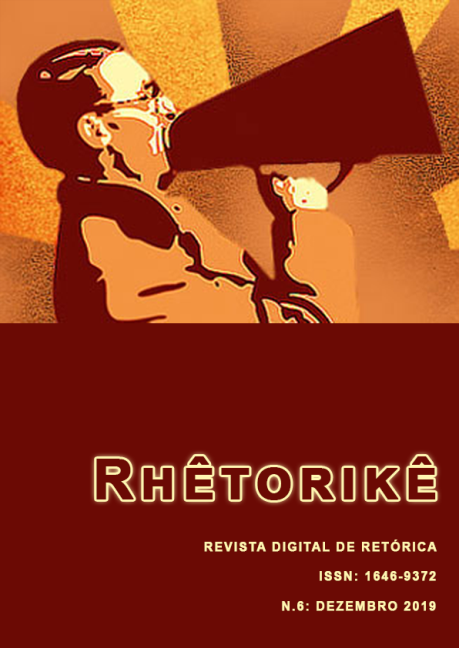Using metaphors to communicate Gender Equality issues in advertising
Palavras-chave:
metaphors and advertising, multimodal metaphors, cultural perspectives, gender equalityResumo
The main objective of this paper is to assess how visual and textual metaphors reasoning is used in advertising communication to promote Gender Equality issues. For this purpose, it is here analysed a film advertisement promoting a Gender Equality topic in a specific cultural context using multimodal metaphors. The results shows that a multimodal metaphor understanding is relevant to the study of Communication in International Development field, mainly when metaphors are used to communicate within different cultures. The findings also exemplify the cautions necessary while using metaphors in order to illustrate a cross-culture issue due to the culture perspective differences. How culture is rooted in the way viewers from different backgrounds might arrive at the intended interpretation of the same multimodal metaphors, and therefore a clear comprehension of the cultural assumptions, values and beliefs is essential. In addition, it illustrates that by allowing discussion when the audience is familiar with the subject, metaphors as perceive can influence in social change behaviour. Assuming the multiplicity of cultural assumptions on Gender Equality in different regions, this paper aims to contribute to the international development field by illustrating how advertising on Gender Equality issues can use multimodal metaphors to communicate initiatives on this matter in different cultural contexts.Referências
Bonilla, J. (2019). Multimodal metaphors and advertising: a cross-cultural comparison if the use of behaviour multimodal metaphors. Darnioji daugiakalbystè | Sustainable Multilingualism.
Booth, C. & Bennett, C. (2002). Gender Mainstreaming in the European Union. Towards a New Conception and Practice of Equal Opportunities?. The European Journal of Women’s Studies.
Burgers, C.; Konijn, E. & Steen G. (2016). Figurative Framing: Shaping Public Discourse through Metaphor, Hyperbole, and Irony. Communication Theory.
Forceville, C. (2015). Visual and multimodal metaphor in advertising: cultural perspectives. Styles of Communication, Second International Conference on Communication Styles. University of Krosno, Poland.
Forceville, C. (2016). Visual and multimodal metaphor in film: charting the field. In K. Fahlenbrach (ed.), Embodied Metaphors in Film, Television and Video Games: Cognitive Approaches (pp. 17-32). London: Routledge.
Hoeken, H.; Swanepoel, P.; Saal, E. & Jansen, C. (2009). Using Message Form to Stimulate Conversations: The Case of Tropes. Communication
Theory.
Leahy, K. & Yermish, I. (2003). Information and communication technology: gender issues in developing nations. paper for Informing Science
Institute.
Lakoff, G. & Johnson, M. (1980). Metaphors we live by. University of Chicago Press.
Mody, B. (2003). International and Development Communication. Sage Publications.
Paternotte, D. & Kuhar, R. (2018). Disentangling and locating the ‘Global Right’ Anti-campaign in Europe. Cogitatio.
Skjeie, H. & Teigen, M. (2005). Political Constructions of Gender Equality: Travelling Towards ... a Gender Balanced Society?. Nordic Journal of
Women’s Studies.
Sopory, P. & Dillard, J. (2002). The Persuasive Effects of Metaphor. A Meta-Analysis. Human Communication Research.
Thibodeau, P. & Boroditsky, L. (2011). Metaphors We Think With: The Role of Metaphor in Reasoning. Kyushu University, Japan.
Valters, C. (2014). Theories of Change in International Development: Communication, Learning or Accountability?. Justice and Security Research Programme, International Development Department.
Waisbord, S. (2001). Family Tree of Theories, Methodologies and Strategies in development Communication. The Rockefeller Foundation.
Waisbord, S. (2007). The Irony of Communication for Social Change. Mazi articles.
Downloads
Publicado
Edição
Secção
Licença
A Rhêtoriké- revista digital de retórica é uma revista de Acesso Livre.Todos os seus conteúdos estão disponíveis gratuitamente, sem custo para o utilizador ou para a sua instituição.O utilizador pode ler, baixar, copiar, distribuir, imprimir, pesquisar ou vincular aos textos completos dos artigos nesta revista sem autorização prévia do editor ou do autor.
A Rhêtoriké- revista digital de retórica, LabCom.IFP, está licenciado sob uma Licença Creative Commons Atribuição-Não Comercial-NoDerivs 3.0 Unported.Ao enviar seu trabalho para a revista, confirma ser o autor e que possui os direitos autorais, que o conteúdo é original e anteriormente inédito e que concorda com os termos de licenciamento.
English:
Rhêtoriké- digital rhetoric journal is an Open Access journal.All its contents are available free of charge, at no cost to you or your institution.You can read, download, copy, distribute, print, search or link to the full texts of the articles in this journal without prior permission from the editor or the author.
Rhêtoriké- digital rhetoric journal, LabCom.IFP, is licensed under a Creative Commons Attribution-NonCommercial-NoDerivs 3.0 Unported License.By submitting your work to the journal, you confirm that you are the author and that you own the copyright, that the content is original and previously unpublished, and that you agree to the licensing terms.

